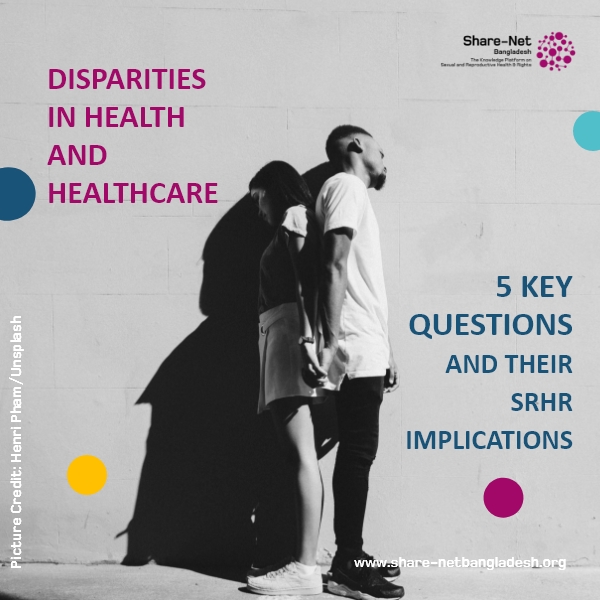Disparities in Health and Health Care: 5 Key Questions and their SRHR Implications
In the U.S., significant health disparities are not just persistent—they’re deepening. Black infants are more than twice as likely to die as White infants, and maternal mortality rates for Native Hawaiian or Pacific Islander (NHPI), Black, and American Indian or Alaska Native (AIAN) women are alarmingly high. These stark disparities in health outcomes reflect broader systemic inequalities that impact various groups, particularly in Sexual and Reproductive Health and Rights (SRHR).
Health disparities refer to differences in health outcomes, while health care disparities involve unequal access to and quality of care. These disparities are evident across race, ethnicity, socioeconomic status, and other factors, including sexual and reproductive rights. For instance, women of color, particularly those from Black, Hispanic, AIAN, and NHPI communities, face higher risks during pregnancy and childbirth. These risks are tied to systemic racism, lack of access to quality health care, and economic inequalities, all of which intersect with SRHR.
Addressing these disparities is crucial not only for promoting equity but also for improving overall public health. The U.S. population is becoming increasingly diverse, and by 2050, people of color are expected to make up over half of the population. Yet, health disparities, particularly in SRHR, threaten this future by contributing to higher rates of illness and death among marginalised communities. Moreover, these disparities have significant economic costs, including excess medical care expenses and lost productivity.
Despite efforts to address these issues, disparities remain entrenched. Recent federal actions, such as President Biden’s Equity Action Plans, have aimed to close these gaps, but challenges persist. For example, the expiration of the expanded Child Tax Credit has caused child poverty rates to rebound, disproportionately affecting Black and Hispanic children. Meanwhile, the ongoing rollback of reproductive rights following Dobbs’ decision threatens to exacerbate disparities in maternal health, especially for women of color.
Looking ahead, the 2024 presidential election and evolving policies on Medicaid, immigration, and climate change will play pivotal roles in shaping the future of SRHR. As mental health needs grow and climate-related health risks increase, the disparities in SRHR could widen further unless concerted efforts are made to address these systemic issues. The fight for health equity, particularly in sexual and reproductive health, remains a critical challenge for the nation.
Source: Kaiser Family Foundation (KFF)
Picture Credit: Henri Pham/Unsplash


